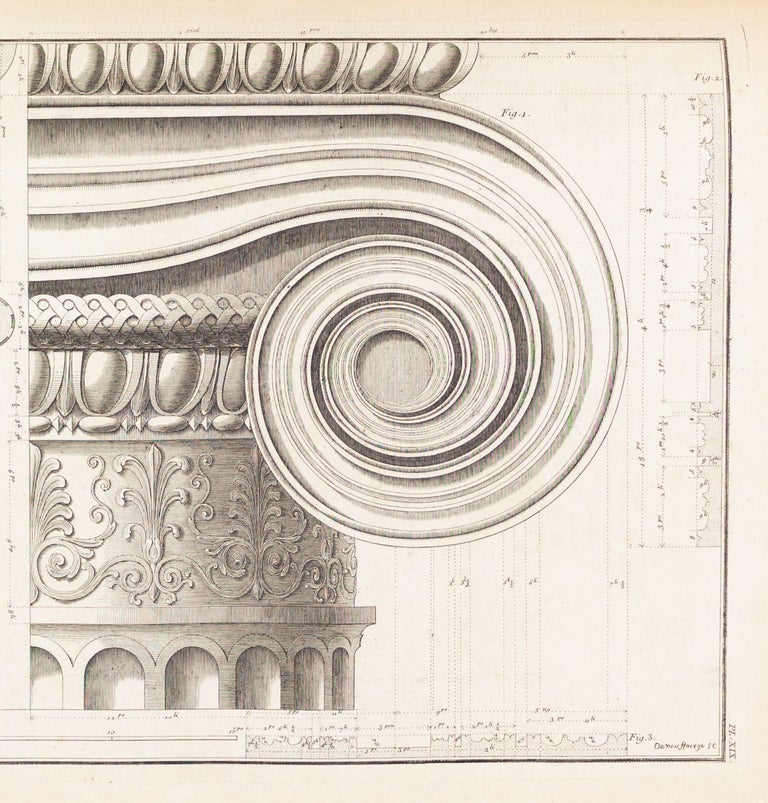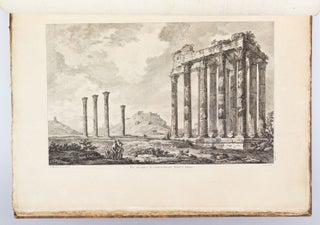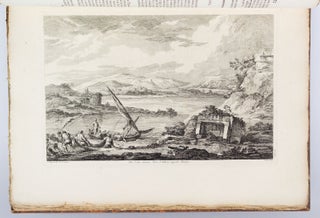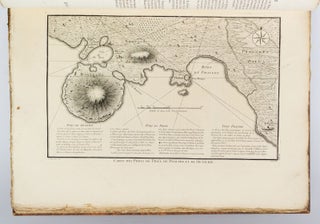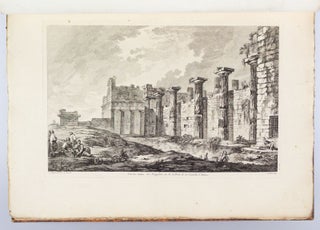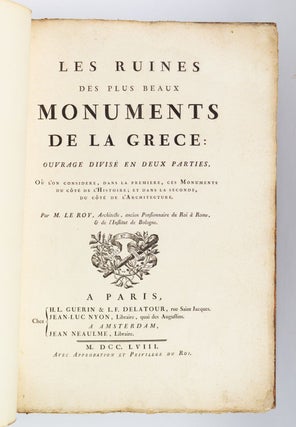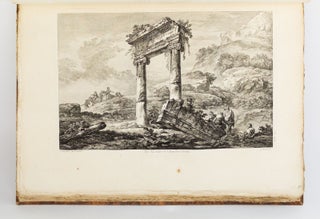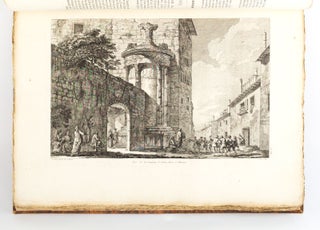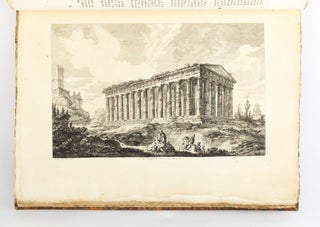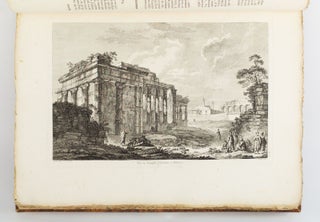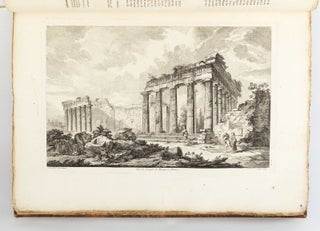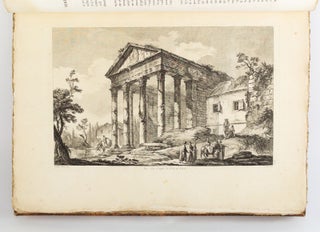LES RUINES DES PLUS BEAUX MONUMENTS DE LA GRECE.
(Paris: H. L. Guerin & L. F. Delatour, Jean-Luc Nyon, and Jean Neaulme, 1758). 608 x 445 mm. (24 x 17"). xiv, 56; [2], vi, 28 pp. Two parts in one volume. FIRST EDITION.
Later (early 20th century?) quarter sheep over marbled boards, raised bands, compartments gilt, reddish-brown leather label with gilt lettering, all edges untrimmed. With large woodcut vignette on title, and 60 ENGRAVED PLATES by Le Bas, Littret de Montigny, Neufforge, and Patte after Le Roy. Brunet III, 103; Millard, French 101. ◆A little rubbing to corners and head and tail of spine, leather a bit faded, chafed, and freckled in places, but the binding entirely sound and still quite pleasing; very faint diagonal crease at lower corner of many leaves, a handful of plates slightly browned (one more noticeably so), other minor issues, but quite a fine copy internally--the vast majority of the contents clean and bright, with deep impressions of the text, with the engravings richly impressed, and with vast margins.
With engravings by the some of the most esteemed artists of the day, this imposing work contains beautiful depictions of Greek ruins and monuments that proved extremely influential to the development of French Neoclassical architecture. The text is divided into two parts, the first covering the history of various monuments and Le Roy's thoughts on the principles of architecture, and the second primarily containing a discussion of the orders of columns--particularly the Doric order--as well as several reconstructions of ruined temples. According to Millard, this work "breaks new ground in providing a synthesis of archaeological findings with a body of architectural theory developed and expanded from the important controversy of Claude Perrault and Francois Blondel [i.e., quarrel of the Ancients and the Moderns]. . . . Perhaps most important, Le Roy's treatise provides the theoretical framework and many of the actual models for French neoclassical architecture." Although "Les Ruines" came under some criticism, especially by British rivals James Stuart and Nicholas Revett, it nevertheless "made a strong public impact," in the words of the Dictionary of Art Historians, and "greatly influenced the architects of the day, particularly Jacques-Denis Antoine, Jean-Arnaud Raymond, Alexandre-Théodore Brongniart, and François-Joseph Bélanger." This was in no small part due to the exquisite plates that included many picturesque views, engraved by talented artists such as Louis-Joseph Le Lorrain, Pierre-Charles Le Mettay, Claude-Antoine Littret de Montigny, and Jacques Philippe Le Bas, among others. The son of the horologer to Louis XV, Julien-David Le Roy (1724-1803) was an architect, art historian, and archaeologist. He was a protégé of Jacques-François Blondel (1705-74), whom he later succeeded as professor at the Académie Royale d'Architecture. After winning the Prix de Rome in 1754, Le Roy spent time in Greece studying and measuring ancient architecture, and developing many of the theories that he would eventually publish in the present work. (ST17496-017)
Price: $7,500.00

